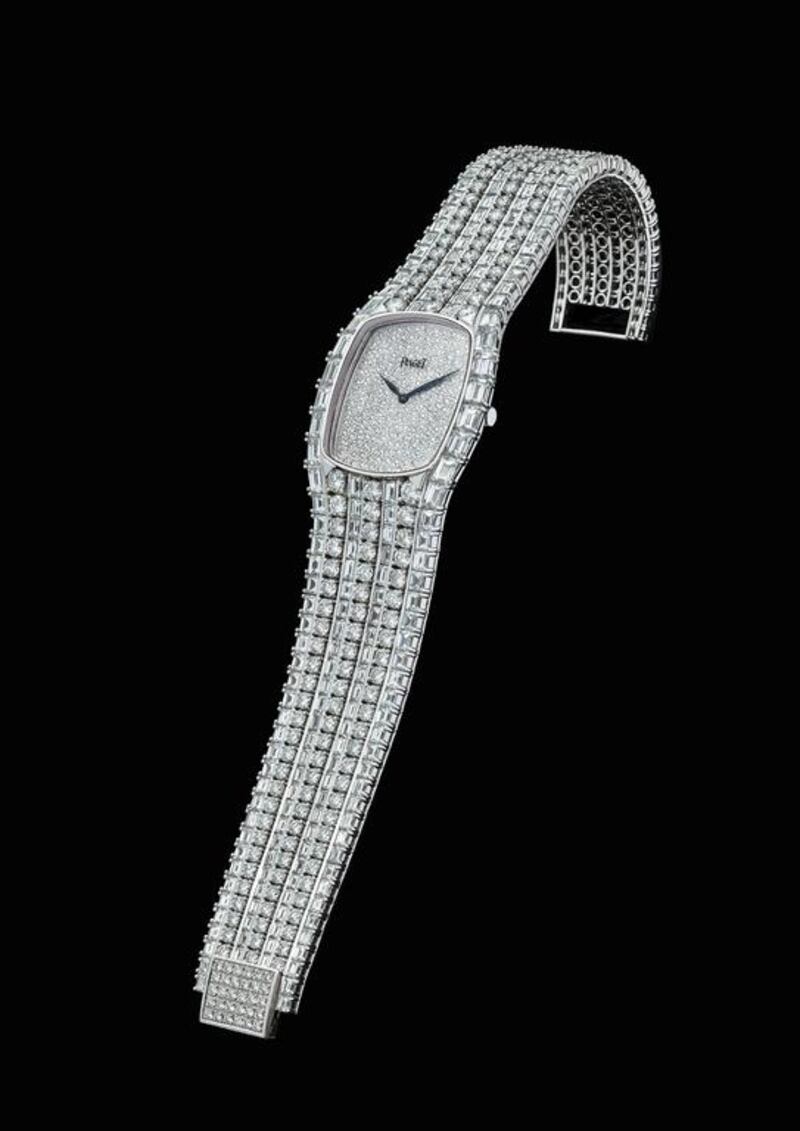Selina Denman
Claude Sfeir remembers buying his first watch. It was a stainless steel Rolex (ref 6694), acquired in Dubai in 1979 from Ahmed Seddiqi & Sons. It cost him US$80 (Dh294).
Today, Sfeir owns one of the largest collections of watches, by value and volume, in the region. The Lebanese national refuses to reveal exactly how many timepieces he currently owns and how much he has spent on his collection over the years – he is, in fact, almost sheepish when I ask, as if he recognises that this “hobby” of his may, over the years, have become slightly excessive. “Every time I decide to stop, I buy more,” he laughs.
Sfeir spends two or three hours a day reading about watches, and attends 30-odd auctions over the course of the year. “And if I hang my paddle, I never stop,” he says with a smile.
Sfeir was in Dubai to speak at the Grand Prix d’Horlogerie de Genève exhibition, a showcase of 69 of the world’s most coveted watches, and also to attend the Christie’s Dubai watch auction, the first in the Middle East for three years. At the auction, a total of 46 lots sold for $1,591,750 (Dh5.8 million), with 85 per cent of purchases made by collectors who, like Sfeir, are based in the region. The highest seller was an 18k white gold and diamond-set bracelet watch by Piaget from 1984 (pictured) that fetched $106,250 (Dh390,256). A rare 18k pink gold tourbillon wristwatch by Breguet was the second highest seller, at $97,500 (Dh358,115), followed by an 18k pink gold, limited-edition chronograph tourbillon wristwatch by Blancpain, which earned $93,6750 (Dh344,000).
When we meet, Sfeir is wearing two watches. One is a Sky Moon Tourbillon by Patek Philippe (ref 5002). This is the most complicated wristwatch the Swiss manufacturer has ever made, with 12 complications and 686 parts, and production is limited to two pieces per year. “I was waiting seven years to collect this watch,” Sfeir admits.
On the other hand is a Tourbillon Platinum watch by the niche Geneva-based watchmaker FP Journe, which produces only 800 pieces each year. Emblazoned with the Chinese flag, with pink gold movements, the limited-edition timepiece on Sfeir’s wrist is one of only five ever made. In fact, so enamoured is Sfeir, who works in the jewellery business, by the FP Journe brand that he is about to open a specialist vintage jewellery store in Beirut that will be an official agent of the brand.
So why watches, I ask? “I like the mechanics,” he responds without missing a beat. “Sometimes you have a watch and, from the outside, it is very simple, but on the inside it carries some very important movements.”
“Men love the mechanics – and it’s easier to store watches than it is to store cars,” says Philippe Léopold-Metzger, the CEO of Piaget, when we meet at the newly renovated Piaget store in The Dubai Mall. “Also, for men, it’s the only piece of jewellery that they will wear most of the time, so that is an attraction. It says a lot about your personality.”
One thing’s for sure, it has very little to do with the time. In this day and age, people are more likely to look to their mobile phones or the dashboards of their cars than their wrists to find out what time it is, but the big watchmakers scoff at the suggestion that people will ever stop coveting, collecting, wearing – and loving – their carefully crafted creations.
“The time on the phone has no value, because the phone itself has no value. You don’t dream about owning a phone,” says Daniel Riedo, the CEO of Jaeger-LeCoultre. “It’s very different with a watch.”
For Riedo, investing in a watch should be an emotional process. “It is like buying paintings. There are two kinds of collectors. There’s the kind that only buys a painting because it was made by some famous artist. They buy it, they put it in the safe and they never look at it. That’s not passion. The best is when you love this product, you are able to buy it, you wear it and you are happy with it.”
These days, Sfeir is on the lookout for unique pieces and prototypes, but admits that there are fewer and fewer to be found. He is a traditionalist in his tastes, favouring vintage timepieces by Rolex and Patek Philippe, but of the newer, perhaps lesser-known brands, FP Journe is a firm favourite, primarily because its watches have a more vintage aesthetic.
“There are many nice brands, but sometimes the new brands are overpriced because they spend too much on marketing, so they need to cover their costs.”
Sfeir offers one piece of advice to those looking to start their own collection: pay attention to quality and rarity, rather than quantity.
“If you want to start on a low budget and keep your budget safe, you can buy a Panerai – the Radiomir with the California dial – for $6,000 or $7,000 [up to Dh25,000]. You can wear the watch for 10 years and then sell it for $10,000 or $15,000 [up to Dh55,000]. You can also start with a small Rolex. Go back to classic ones, then gradually go up in the degree of complications.”





